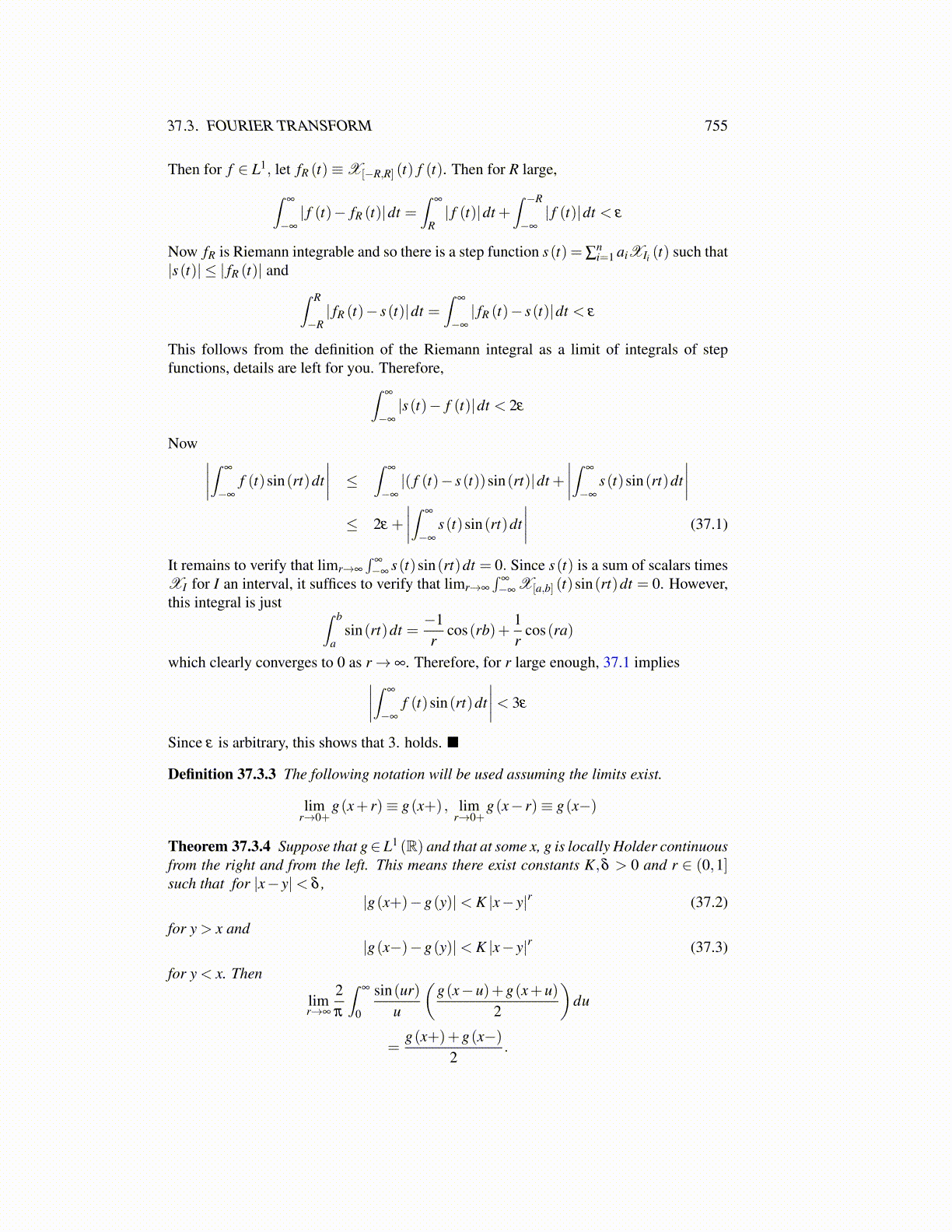
37.3. FOURIER TRANSFORM 755
Then for f ∈ L1, let fR (t)≡X[−R,R] (t) f (t). Then for R large,∫∞
−∞
| f (t)− fR (t)|dt =∫
∞
R| f (t)|dt +
∫ −R
−∞
| f (t)|dt < ε
Now fR is Riemann integrable and so there is a step function s(t) = ∑ni=1 aiXIi (t) such that
|s(t)| ≤ | fR (t)| and ∫ R
−R| fR (t)− s(t)|dt =
∫∞
−∞
| fR (t)− s(t)|dt < ε
This follows from the definition of the Riemann integral as a limit of integrals of stepfunctions, details are left for you. Therefore,∫
∞
−∞
|s(t)− f (t)|dt < 2ε
Now ∣∣∣∣∫ ∞
−∞
f (t)sin(rt)dt∣∣∣∣ ≤ ∫
∞
−∞
|( f (t)− s(t))sin(rt)|dt +∣∣∣∣∫ ∞
−∞
s(t)sin(rt)dt∣∣∣∣
≤ 2ε +
∣∣∣∣∫ ∞
−∞
s(t)sin(rt)dt∣∣∣∣ (37.1)
It remains to verify that limr→∞
∫∞
−∞s(t)sin(rt)dt = 0. Since s(t) is a sum of scalars times
XI for I an interval, it suffices to verify that limr→∞
∫∞
−∞X[a,b] (t)sin(rt)dt = 0. However,
this integral is just ∫ b
asin(rt)dt =
−1r
cos(rb)+1r
cos(ra)
which clearly converges to 0 as r→ ∞. Therefore, for r large enough, 37.1 implies∣∣∣∣∫ ∞
−∞
f (t)sin(rt)dt∣∣∣∣< 3ε
Since ε is arbitrary, this shows that 3. holds. ■
Definition 37.3.3 The following notation will be used assuming the limits exist.
limr→0+
g(x+ r)≡ g(x+) , limr→0+
g(x− r)≡ g(x−)
Theorem 37.3.4 Suppose that g∈ L1 (R) and that at some x, g is locally Holder continuousfrom the right and from the left. This means there exist constants K,δ > 0 and r ∈ (0,1]such that for |x− y|< δ ,
|g(x+)−g(y)|< K |x− y|r (37.2)
for y > x and|g(x−)−g(y)|< K |x− y|r (37.3)
for y < x. Then
limr→∞
2π
∫∞
0
sin(ur)u
(g(x−u)+g(x+u)
2
)du
=g(x+)+g(x−)
2.